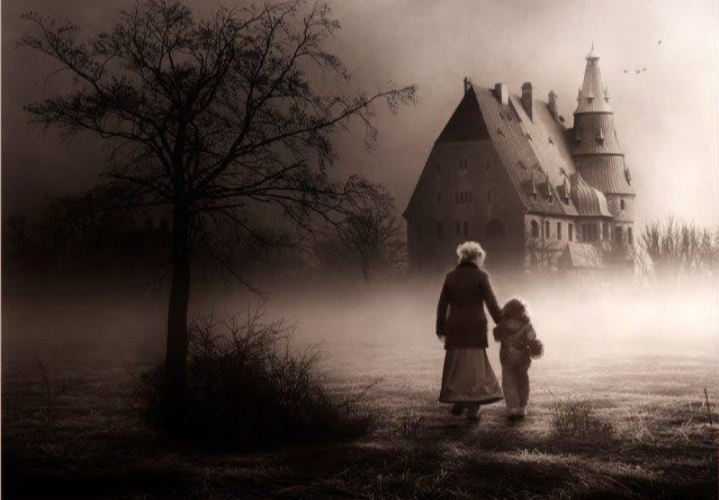Gothic novel or story revolves around a large ancient house that conceals a terrible secret or serves as the refuge of a specially frightening and threating character. Gothic literature developed during the Romantic period in Britain. The first mention of “Gothic” as pertaining to literature, was in the subtitle of Horace Walpole’s 1765 story “The Castle of Otranto: A Gothic story” which was supposed to have meant by the author as a subtle joke. In the book, it’s purported that the story was an ancient one, then recently discovered. But that’s just a part of the tale. In the most general terms Gothic literature can be defined as writing that employs dark and picturesque scenery, startling and melodramatic narrative devices and an overall atmosphere of exoticism, mystery, fear and dread. This kind of literature is Gothic because its imaginative impulse was drawn from medieval buildings and ruins, such novels commonly used such settings as castles and monasteries equipped with subterranean passages, dark battlements, hidden panels and trapped doors.
Walpole’s tale of love, death and supernatural elements paved the way for a fictional genre that has been explored by prominent authors from the likes of Eagar Allan Poe, The Bronte sisters and many more. Reader’s fascinating with terror paved the way for a thrilling new ideal that helped to popularize the movement. One of the crucial components of captivating Gothic story evokes feelings of suspense and fear. In the novel ” The Mysteries of Udolpho” which was written by Ann Radcliffe in 1794. The story centers around Emily St. Aubert to cruelties created by guardians and imprisoned in castles. The work included strange, fearful events and a haunting atmosphere that come to define the genre in the years to come.
Another Gothic writer Mary Shelly set her scenes amid creepy locations such as graveyards, gloomy castles and even developed the persona of a grotesque monster to emphasize the eerie plot of her 1818 novel FRANKENSTEIN. This novel revolves around Victor and Walton. Victor pursues the monster around the world, he arrives in the artic and encounters Waltor, bringing the story in full circles back to the point at which the narration switched from Walton to Victor. The novel climax with Walton finding the monster in the room, gazing at Victor’s dead body and weeping. The 20th century critics began to analyze the novel from a variety of new perspectives and to recognize in it many devices and themes which are now presented as evidence that Shelly’s self described ” hideous progeny” was ahead of its time.
Another novel from this literature is “Dracula” written by Bram Stocker which symbolically sexualized characters. It is arguably one of the most beloved classics of Gothic literature. By examining the Victorian era in which Dracula was written, looking closely at how the female characters are portrayed the gender relations between the characters, and the Blatant Homosexual undertones of the novel, this reflection will explore how the classic seamlessly manipulates the themes of women’s sexuality, its gender inversion and also the point of view of Brampton Stoker. This novel became the famous horror novel in the 15th century and also inspired many horror story after it.
The genre continued to command a large readership well into the 19th century, first as romantic authors such as Sir Walter Scott’s, “The Tapestried chamber”, 1929 adopter Gothic conventions, then later as Victorian writers such as Robert Louis Stevenson’s, “The Strange Case of Dr. Jekyll and Mr. Hyde” (1886) incorporated Gothic motifs in their stories of horror and suspense.
Today Gothic literature has been replaced by ghost and horror stories, detective fiction, suspense and thrill novels, and other contemporary forms that emphasize mystery, shock and sensation and each of these types is indebted to Gothic fiction. Works of Gothic literature utilize common elements that keep readers coming back for more. Though the genre has experienced a high as well as a low with respect to its popularity, authors throughout the ages continue to have an audience waiting for their stories of terror, horror and mysteries of supernatural.
Priya Singh @samacharline

